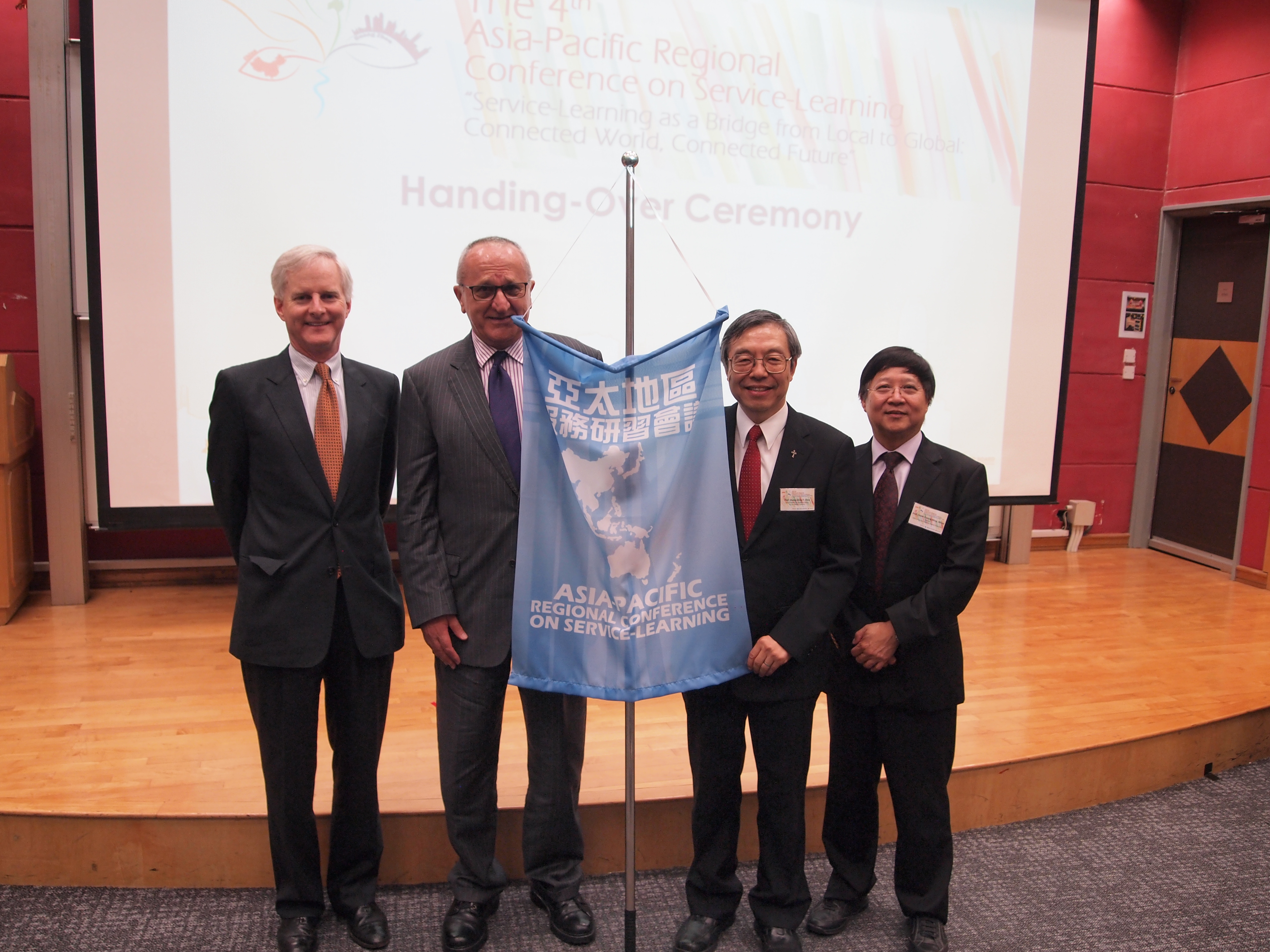Location
MD214, Paul Cardinal Shen Medical Building, Fu Jen University
Start Date
28-5-2015 4:30 PM
End Date
28-5-2015 5:40 PM
Description
The primary objective of this study is to understand the effects of organization structure and resources towards the effectiveness of promoting service learning. Literature review shows that there seems to be limited studies that discuss the effects of organization structure and resources. Therefore, in order to justify the gap in the extant literature where most studies selected one service learning project as the case for research target, analysis using the organizational perspective was accomplished on the factors that affect the promotion of service learning.
Considering both static and dynamic organization structures and resources integration, this study shall aim to provide guidance for the design of organization structure and the integration of resources for those organizations interested in promoting service learning. Using the purposive sampling method, a total of 8 schools were selected from the winner of the Ministry of Education's Gold and Silver Awards in service learning. Semi-structured interview were accomplished on several administrative offices. Interviews on average lasted for around 2 hours. After the interviews were accomplished, data collected are transcribed and analyzed.
After exploration of the information about the organization structure and resources themes wherein those sample school, their similarities and differences are then noted. Results show that within the organizational structures, each school has their own distinct features. However, the concept behind the design and influencing factors are quite similar. Primarily, most schools use specific first layer committee chaired by the principal or the deputy of the school to support and guide curriculum design and activities and set up an execution division for the implementation of service learning policy. Most school set the division in the second layer of the organization with very few exceptions.
Within the implementation, appropriate division of labor is observed with both full -time and by-contract staffs from various professional background, while funding is filled through proper channels by allocating budget inside or fund raising outside the organization. Within the resource organizing process, allocations are mostly teacher and service learning program designer led. With well designed project objectives and compassionated teacher, the students, cooperating agencies, funding, and creative ideas are therefore integrated in most situations. Schools also use various measures of effectiveness, such as: self-assessment, reflections report, feedback from cooperating agencies, pre/post employability tests, pre/post ability tests, learning assessments, outside accrediting agencies, and many others. Therefore it is not easy to make performance comparison among schools with different measure scheme. Base from the research findings, the development of a survey is proposed which can be used to evaluate the effectiveness of an institute who are promoting service learning and the guideline for structuring organization best suited for promoting service learning might be developed.
Recommended Citation
Yang, B.-c. (2015, May). On the organization best suitable for service-learning: Institutional perspective. Paper presented at the 5th Asia-Pacific Regional Conference on Service-Learning: Love Journey: Community Engagement through Service-Learning, Fu Jen Catholic University, Taiwan.
Included in
On the organization best suitable for service-learning : institutional perspective
MD214, Paul Cardinal Shen Medical Building, Fu Jen University
The primary objective of this study is to understand the effects of organization structure and resources towards the effectiveness of promoting service learning. Literature review shows that there seems to be limited studies that discuss the effects of organization structure and resources. Therefore, in order to justify the gap in the extant literature where most studies selected one service learning project as the case for research target, analysis using the organizational perspective was accomplished on the factors that affect the promotion of service learning.
Considering both static and dynamic organization structures and resources integration, this study shall aim to provide guidance for the design of organization structure and the integration of resources for those organizations interested in promoting service learning. Using the purposive sampling method, a total of 8 schools were selected from the winner of the Ministry of Education's Gold and Silver Awards in service learning. Semi-structured interview were accomplished on several administrative offices. Interviews on average lasted for around 2 hours. After the interviews were accomplished, data collected are transcribed and analyzed.
After exploration of the information about the organization structure and resources themes wherein those sample school, their similarities and differences are then noted. Results show that within the organizational structures, each school has their own distinct features. However, the concept behind the design and influencing factors are quite similar. Primarily, most schools use specific first layer committee chaired by the principal or the deputy of the school to support and guide curriculum design and activities and set up an execution division for the implementation of service learning policy. Most school set the division in the second layer of the organization with very few exceptions.
Within the implementation, appropriate division of labor is observed with both full -time and by-contract staffs from various professional background, while funding is filled through proper channels by allocating budget inside or fund raising outside the organization. Within the resource organizing process, allocations are mostly teacher and service learning program designer led. With well designed project objectives and compassionated teacher, the students, cooperating agencies, funding, and creative ideas are therefore integrated in most situations. Schools also use various measures of effectiveness, such as: self-assessment, reflections report, feedback from cooperating agencies, pre/post employability tests, pre/post ability tests, learning assessments, outside accrediting agencies, and many others. Therefore it is not easy to make performance comparison among schools with different measure scheme. Base from the research findings, the development of a survey is proposed which can be used to evaluate the effectiveness of an institute who are promoting service learning and the guideline for structuring organization best suited for promoting service learning might be developed.
